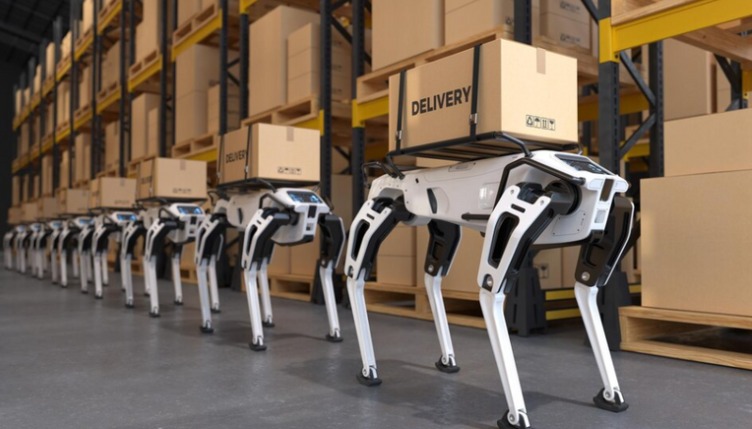
Robotic delivery systems transform goods transport from warehouses to consumers by reducing delays and human error through automation, unlike traditional methods relying on human labor and conventional vehicles.
Enhancing Speed and Precision
Robotic delivery logistics is transforming the supply chain by utilizing robots equipped with state-of-the-art navigation systems that can operate around the clock, unaffected by human limitations such as fatigue or distraction. This continuous operation not only accelerates delivery times but also ensures high accuracy in order fulfillment. For instance, robotic delivery logistics enables autonomous delivery vehicles to efficiently cover last-mile deliveries, often the most challenging part of the logistics chain, with remarkable precision. As robotic delivery logistics continues to evolve, it promises to further enhance efficiency and reduce operational costs.
Reducing Operational Costs
One of the most compelling advantages of robotic delivery logistics systems is cost reduction. Traditional delivery methods involve significant expenses related to human labor, fuel, and vehicle maintenance. In contrast, robotic delivery logistics minimize these costs by reducing the need for human intervention and optimizing route planning. For example, autonomous robots can use real-time data to select the most efficient delivery routes, thereby cutting down on fuel consumption and vehicle wear. As robotic delivery logistics continue to evolve, they offer even greater potential for reducing operational costs and improving delivery efficiency.
The Technological Backbone of Robotic Delivery Logistics
To understand the impact of robotic delivery logistics, it’s essential to explore the technology that powers these systems. The integration of AI and machine learning plays a crucial role in enabling robots to make intelligent decisions and adapt to various environments.
Advanced Sensors and Navigation
Robotic delivery systems are equipped with advanced sensors such as LIDAR, cameras, and GPS to map out and navigate their surroundings. These sensors allow robots to detect obstacles, recognize landmarks, and adapt to changing conditions in real time. This capability is crucial for ensuring safe and efficient delivery operations, particularly in complex urban environments.
AI-Powered Decision Making
AI algorithms enable robots to analyze vast amounts of data, make informed decisions, and predict potential issues before they arise. For instance, AI can optimize delivery routes based on traffic patterns, weather conditions, and real-time demand, enhancing overall efficiency and customer satisfaction.
The Impact on Supply Chain Management
Robotic delivery logistics are not just a technological marvel; they have a profound impact on the entire supply chain. From warehouses to end consumers, robotic systems streamline operations and improve overall efficiency.
Streamlined Warehouse Operations
Robotic systems are increasingly being used within warehouses to handle sorting, packing, and inventory management. Automated systems can quickly move goods from one location to another, reducing the time required for manual handling and minimizing errors. This efficiency translates to faster order processing and reduced lead times, benefiting both businesses and consumers.
Transforming Last-Mile Delivery
The last mile of delivery is often the most challenging and costly segment of the supply chain. Robotic delivery systems address these challenges by offering a cost-effective and efficient alternative to traditional delivery methods. Autonomous delivery robots can navigate urban environments and deliver packages directly to consumers’ doorsteps, improving convenience and reducing delivery times.
Challenges and Considerations
Despite their numerous benefits, robotic delivery systems are not without challenges. Issues such as regulatory compliance, safety concerns, and technological limitations need to be addressed to fully realize their potential.
Regulatory and Safety Concerns
As robotic delivery systems become more prevalent, regulatory bodies are working to establish guidelines and standards to ensure their safe operation. Ensuring that robots adhere to traffic laws, navigate safely around pedestrians, and handle packages securely are critical considerations for widespread adoption.
Technological Limitations
While robotics technology has advanced significantly, there are still limitations to overcome. For instance, robots may struggle with complex weather conditions or unexpected obstacles. Continued research and development are necessary to enhance the reliability and functionality of these systems.
The Road Ahead: Embracing Robotic Delivery
The future of robotic delivery logistics is bright, with continued advancements promising even greater efficiency and innovation. As technology evolves and regulatory frameworks adapt, robotic delivery systems will play an increasingly pivotal role in shaping the logistics landscape.
For businesses looking to stay ahead of the curve, investing in robotic delivery solutions offers a competitive advantage. The ability to deliver goods faster, more accurately, and at lower costs will be crucial in meeting the growing demands of consumers and navigating the evolving logistics market.

